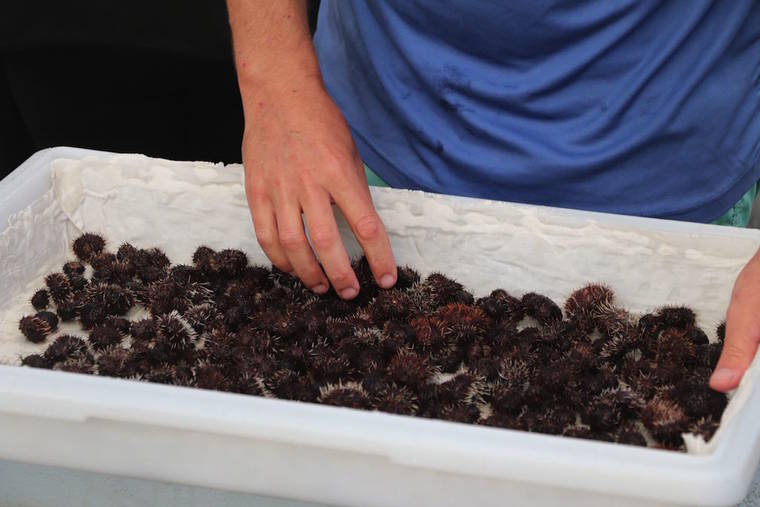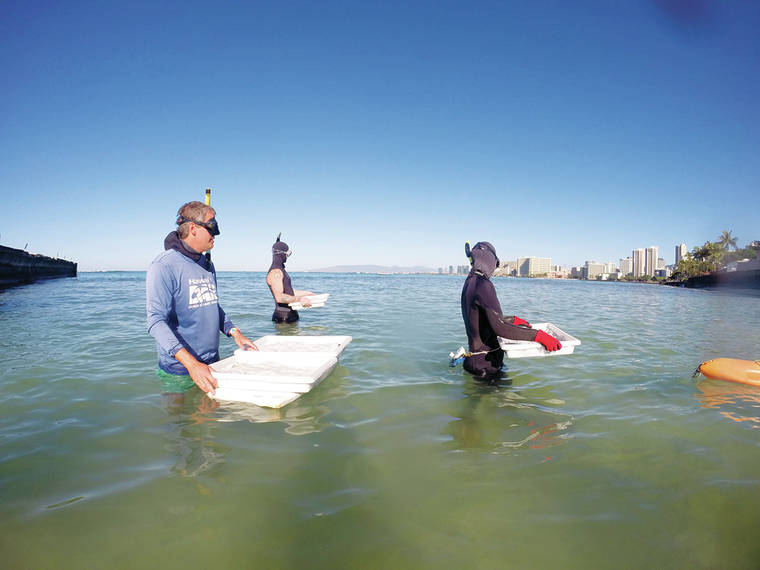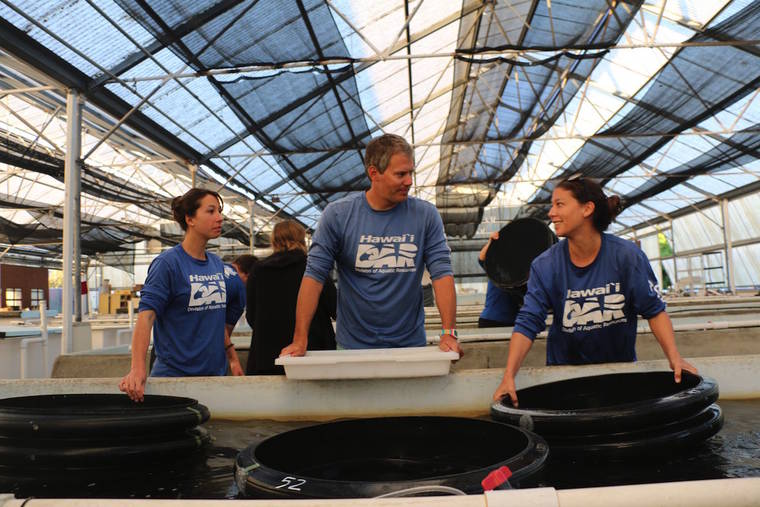HONOLULU — Building on the success of collector urchin out-plantings in Kane‘ohe Bay, the state Department of Land and Natural Resources Division of Aquatic Resources is now out-planting hatchery-raised native sea urchins in the Waikiki Marine Life Conservation District.
This week the DAR Aquatic Invasive Species team introduced the first of 100,000 native sea urchins (Tripneustes gratilla) to help control over four acres of invasive algae.
Sea urchins are vital to aquatic life in Hawai‘i as consumers of invasive algae. Invasive seaweed alters coral reef ecosystems by overgrowing and starving corals of light and can eventually kill the coral colony. When urchins eat invasive seaweed it allows the coral to regrow and opens up spaces for fish, native seaweed (limu) and invertebrates to utilize these areas that were previously overgrown by algae.
“This method of sea urchin biocontrol of invasive seaweed has been used in Kane‘ohe Bay for over nine years where we’ve seen great success in controlling several species of invasive seaweed,” said Wesley Dukes, DAR habitat monitoring coordinator.
Invasive seaweed used to dominate corals in Kane‘ohe Bay, but are now reduced to manageable levels, which has greatly reduced the impact to corals in the Bay, he said.
“We hope to see the same level of success in Waikiki, to improve coral habitat and expand healthy reef coverage in the most visible MLCD in the state,” Dukes said.
Wild urchins are collected from local reefs, spawned and then raised for out-planting at the Anuenue Fisheries Research Center urchin hatchery. This is where urchins will be raised for the three-year project in the Waikiki MLCD. The Anuenue Fisheries Research Center has produced over 500,000 sea urchins to date.
At the hatchery, Dukes explained, “We pick the urchins out of barrels with the hatchery crew and then load 200 to 400 urchins on individual trays. From there, to a truck, to the beach, to boogie boards and floats and to their new homes and jobs grazing away patches of invasive seaweed.”
During the first out-planting recently, the team out-planted 7,000 collector urchins. It takes four to six months at the hatchery for urchins to get big enough to go into the ocean.
“The Waikiki MLCD is our first expansion of the very successful project in Kane‘ohe Bay, where more than 500,000 urchins have been devouring invasive algae for the past nine years. It is a proven, natural way to combat invasive species, and we hope to enhance collector urchin populations at other locations statewide in the near future,” said DAR Administrator Brian Neilson.







